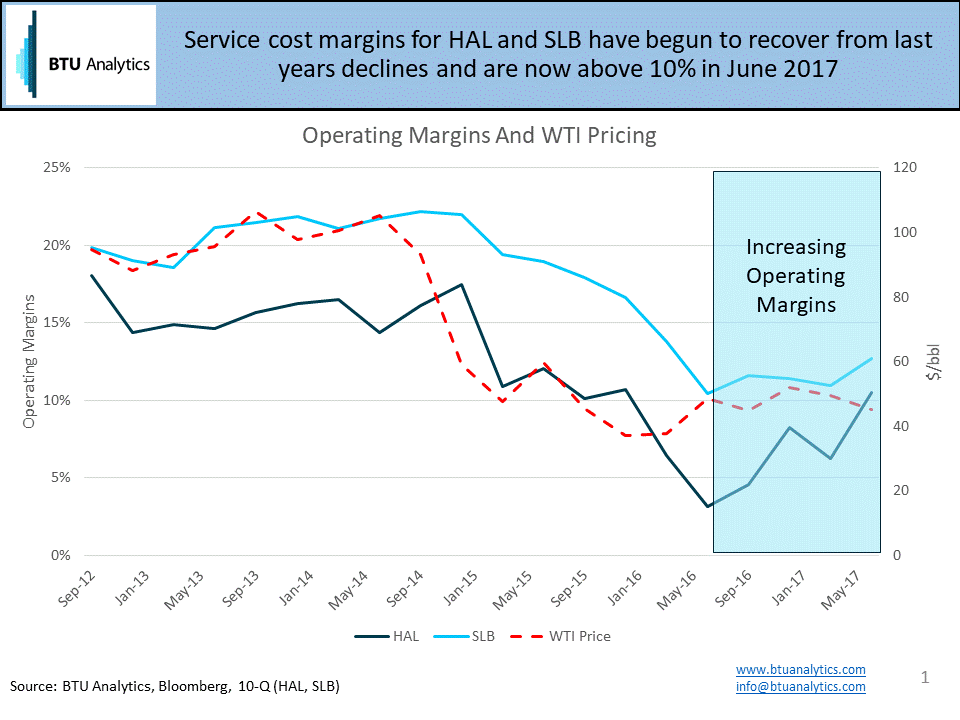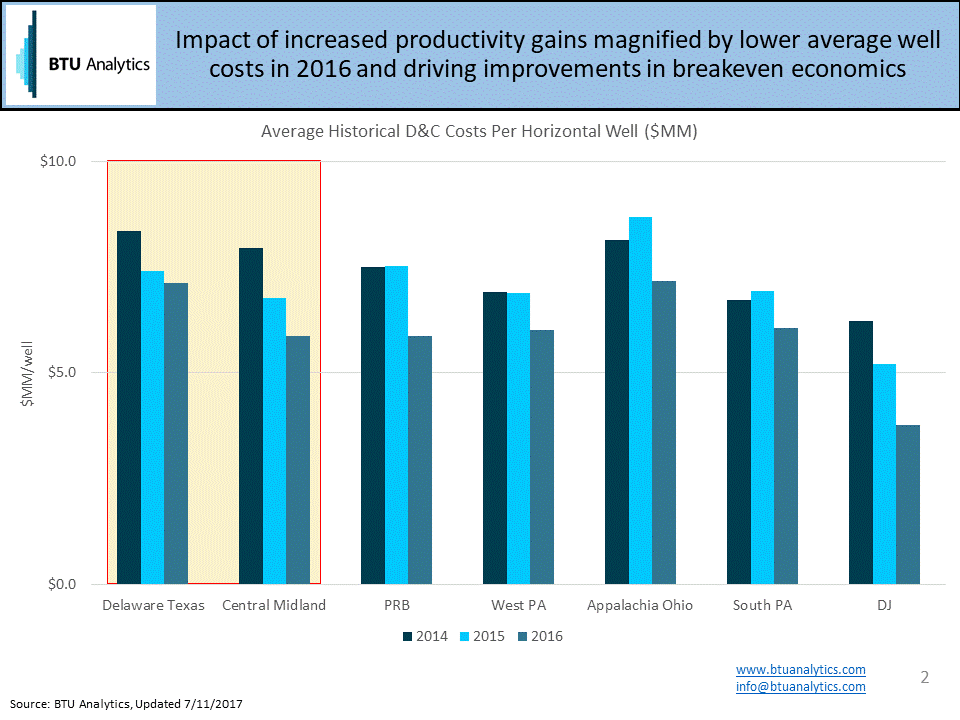Last year BTU wrote an article about the cyclical pattern of service cost margins and the correlation with WTI pricing. As crude prices fell throughout 2015, both Halliburton (NYSE: HAL) and Schlumberger (NYSE: SLB) showed margins dropping from averages near 18% to sub 5% by early 2016. Now, a year later, the trend is finally swinging back in favor of service companies.
The chart below shows the global operating margins for Halliburton and Schlumberger through their recent 10-Q reporting. WTI has been averaging near $50/bbl in 2017, and over the last 12 months the downward trend has ceased for these two service companies. Halliburton has begun to show improving margins, rising above 10% for the first time in over a year and a half. Schlumberger has shown a shallower increase so far, but 2017 data suggests that the current bottom to service margins has been reached.

As service costs increase, there are important implications for the overall economics and activity of a basin. All else equal, the cost for producers to drill and complete wells should rise with growing service industry margins. This will be in stark contrast to the trends seen across the US over the past three years. The chart below shows how well costs have generally declined year over year since 2014. These trends were primarily driven by falling service costs over that timeframe, improved technology, and better understanding of the underlying geology in new plays. The Permian in particular, highlighted below, saw well costs declines of $1.5MM/well to $2.0MM/well from 2014 to 2016. Reductions in well costs, along with increasing productivity as measured by initial production rates, is an important factor in why US production is now set up for significant growth through 2018.

However, as service companies begin to increase costs and improve their margins, this trend in declining D&C costs will likely stagnate or even begin to reverse. This will remove one of the key components operators have relied on to survive lower commodity prices. Rising well costs will dampen economics, and may cause specific areas to require higher WTI pricing to maintain profitability on the producer side. Due to the continuing overhang of global crude supply (Request a copy of BTU’s Oil Market Outlook report), WTI currently has limited upside potential and it is unlikely that commodity prices alone will be able to provide all of the support necessary to keep producer economics comparable with today. Especially if service cost margins head back towards the 18% average seen before the steep drop.
Halliburton commented in their release that they have begun to see signs of plateauing in rig count growth, perhaps indicating US producers may curtail growth in their drilling programs. With earnings season upon us, BTU will be closely following producer guidance for the second part of the year and impacts to 2018 production. For more information on BTU’s market view, request a copy of the US Upstream Outlook Report.








